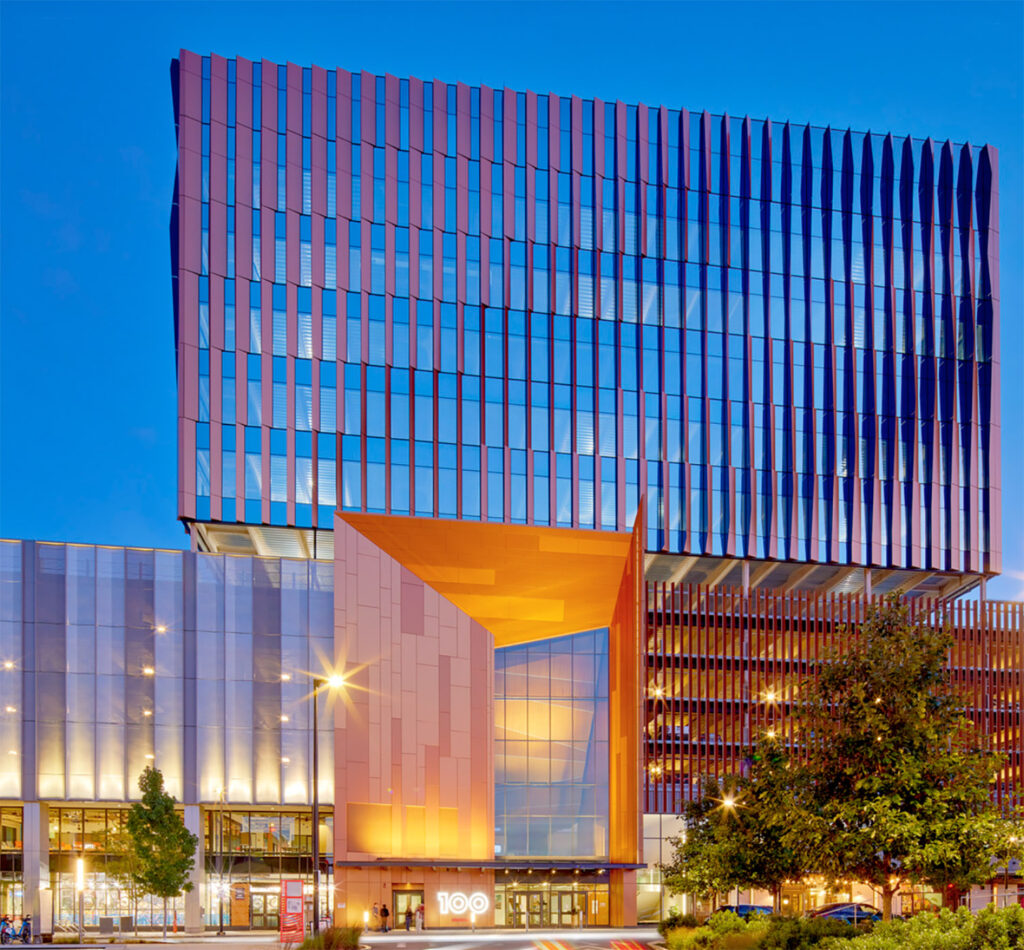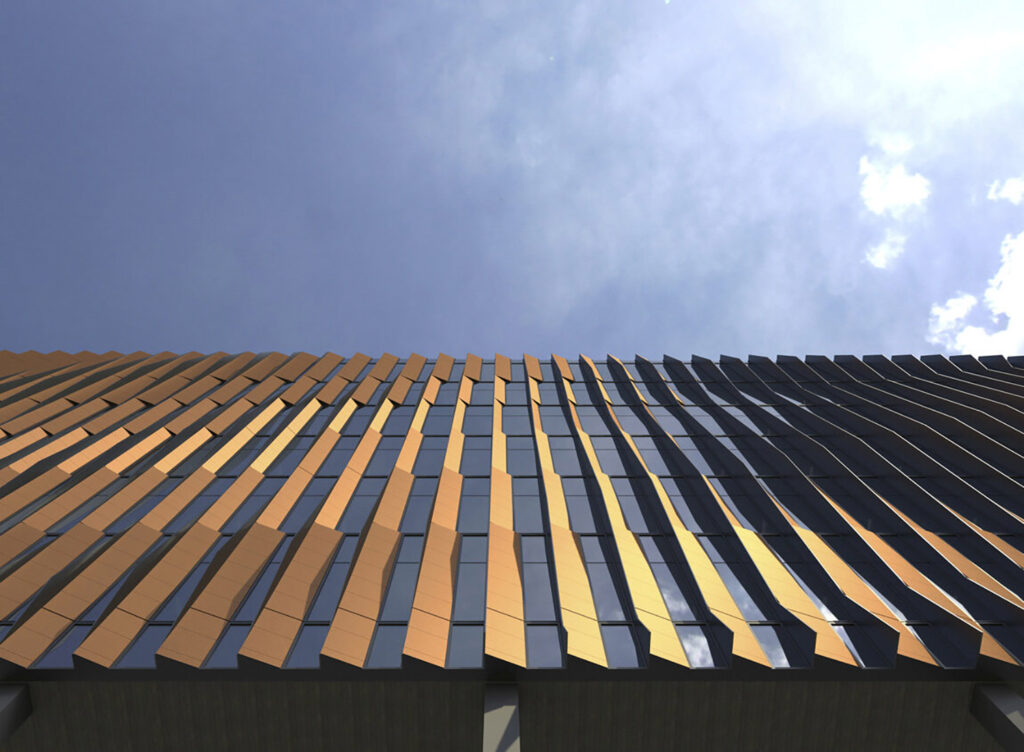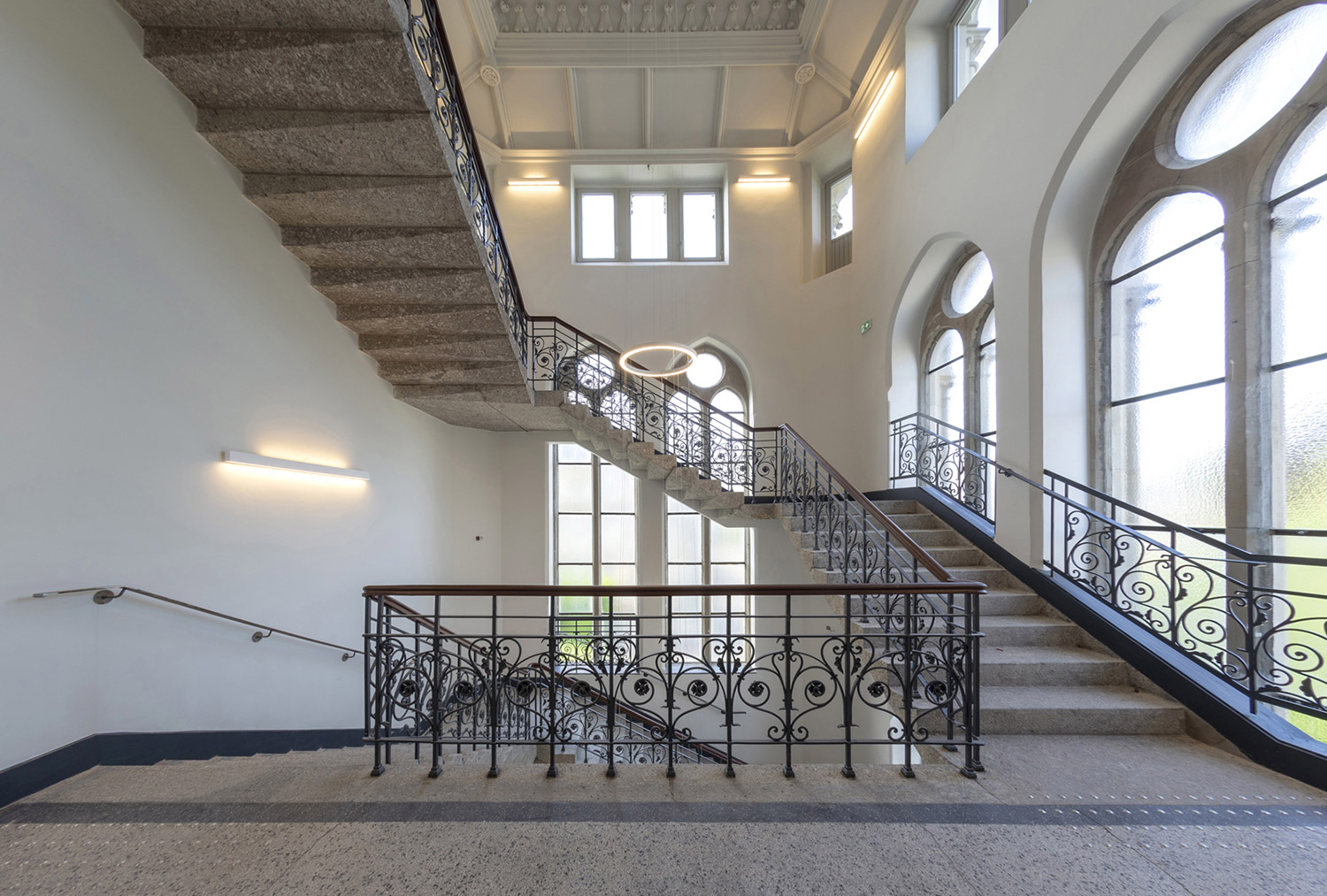As energy efficiency and occupant comfort become top priorities in building design, the demand for innovative facade solutions continues to grow. Windows, once a weak point for heat loss and discomfort, are now at the forefront of this transformation thanks to smart window technologies. These advanced systems go far beyond traditional glazing, offering automated control of light, heat, and ventilation to optimize both energy use and indoor comfort. Smart windows leverage dynamic features such as electrochromic, thermochromic, and photochromic glass, as well as automated ventilation mechanisms that respond to real-time environmental data. By integrating sensors and connectivity, smart windows can automatically adjust tint, open for fresh air, or close to retain heat – minimizing reliance on HVAC systems and reducing energy costs. Facade Today explores how these innovations are ushering in a new era for facade engineering, where smart windows play a crucial role in delivering high-performance, sustainable, and comfortable buildings for the future.


Smart Windows in Action:
Automated Comfort and Intelligent Ventilation
Smart windows combine automated tinting and ventilation features to optimize both energy savings and occupant comfort. Automated tinting uses electrochromic or thermochromic technologies to adjust window transparency in response to sunlight, reducing glare and heat gain while maintaining natural light. Ventilation features include operable sashes or integrated vents that open and close based on real-time environmental data. These systems are seamlessly integrated with sensors – measuring temperature, humidity, CO₂, and air quality – and connect to smart home platforms. As a result, smart windows can automatically respond to changing conditions, synchronize with HVAC systems, and be controlled remotely via apps or voice assistants, delivering a responsive and energy-efficient facade solution.
Types & Technologies Shaping the Future
Smart windows are transforming building envelopes with innovative types and advanced technologies. By type, Organic Light-Emitting Diode (OLED) glass integrates flexible OLED panels, allowing windows to emit light or display information, enhancing both aesthetics and functionality. Self-dimming windows automatically adjust their tint in response to ambient light, reducing glare and solar heat gain for improved comfort and energy efficiency. Self-repairing windows feature materials capable of autonomously healing minor scratches or cracks, extending window lifespan and maintaining clarity without manual intervention.
By technology, Suspended Particle Devices (SPD) use microscopic particles that align under voltage to control light transmission, enabling rapid tint adjustments. Polymer Dispersed Liquid Crystal Devices (PDLC) switch from opaque to transparent when an electric current aligns the liquid crystals, offering instant privacy. Electrochromic windows change color or opacity with a small electrical charge, providing gradual, energy-efficient tinting to reduce glare and heat gain. Together, these innovations enable dynamic, sustainable, and adaptive facades.
Automated Ventilation: Principles and Mechanisms
Automated ventilation in smart windows relies on a network of sensors to monitor indoor and outdoor conditions, such as temperature, humidity, and air quality. Sensor-based airflow control, combined with actuators, enables the system to determine when and how much to ventilate, ensuring optimal indoor comfort and air quality while minimizing energy loss.
Remote and app-based operation gives occupants direct control over ventilation settings, allowing them to open or close vents from anywhere via smartphone or integrate window operation into broader smart home routines. This flexibility enhances user experience and ensures that ventilation adapts to personal preferences and occupancy patterns.
Pre-warming and cooling functions are advanced features that use predictive algorithms and environmental data to prepare indoor spaces for comfort. For example, in the early morning, smart windows can automatically open to let in cool air before outdoor temperatures rise, reducing the need for air conditioning later in the day. Conversely, during colder months, windows may remain closed until the sun’s position allows passive solar heating, then open briefly to refresh the air without significant heat loss. These functions not only improve comfort but also significantly reduce HVAC loads.
Predictive air conditioning leverages weather forecasts, occupancy schedules, and sensor data to anticipate ventilation needs. The system can pre-emptively adjust window positions to maintain ideal indoor conditions, further optimizing energy use and ensuring a consistently comfortable environment.

The Triple Advantage:
Next-Level in Energy, Air Quality, and Privacy
Smart windows with automated ventilation offer a transformative approach to building comfort and efficiency. One of the most significant advantages is energy savings and reduced reliance on traditional HVAC systems. By automatically adjusting ventilation and shading based on real-time conditions, smart windows help maintain optimal indoor temperatures with minimal mechanical intervention. This dynamic response reduces the load on heating and cooling systems, leading to substantial energy savings and lower utility costs.
Improved indoor air quality and occupant comfort are also central benefits. Automated ventilation allows for controlled, fresh air exchange, reducing the buildup of indoor pollutants, CO₂, and humidity. This not only creates a healthier living or working environment but also ensures consistent comfort without the need for manual window operation. Additionally, smart windows can be programmed to optimize airflow during periods of low outdoor pollution or favorable weather, further enhancing occupant well-being.
Enhanced privacy and UV protection are additional features that set smart windows apart. Many systems offer dynamic tinting or shading, which can be adjusted for privacy at the touch of a button or automatically in response to sunlight. This protects occupants from glare and harmful UV rays, safeguarding interior furnishings and improving visual comfort.
Integration with Building Management and Smart Home Systems
Modern smart windows are designed for seamless compatibility with building management systems and popular smart home platforms. They can be integrated with voice assistants and automation platforms, enabling hands-free control and scheduling. Synchronization with thermostats, air purifiers, and safety systems ensures a holistic approach to indoor environment management, maximizing both efficiency and user convenience.
Going Mainstream
Smart Windows Beyond Glass
The adoption of smart windows with automated ventilation is accelerating across both residential and commercial sectors, driven by the need for energy efficiency, occupant comfort, and advanced building automation. The global smart windows market is projected to grow at a robust CAGR of over 11% through 2029, reaching nearly $10 billion, as more buildings integrate these technologies to reduce energy consumption and optimize indoor environments. Residential construction is a key driver, but commercial buildings, hospitals, schools, and even transportation sectors are rapidly embracing smart windows for their dynamic control of light, heat, and ventilation.
Regulatory drivers and sustainability standards are fueling this growth. Stricter energy efficiency codes, government incentives, and green building certifications (like LEED and BREEAM) are encouraging the adoption of smart window systems with automated features. These regulations not only promote energy savings but also support healthier indoor air quality and occupant well-being.
Innovations on the horizon include integration with IoT and AI for predictive control, self-powering smart windows with embedded solar cells, and enhanced user interfaces for seamless operation. The convergence of smart windows with broader building management systems enables real-time optimization of ventilation, shading, and thermal comfort.
Looking ahead, the outlook for widespread adoption is strong. As costs decrease and awareness grows, automated smart windows are poised to become a standard feature in next-generation facades, transforming the way buildings manage energy, comfort, and sustainability.
Useful links:
Case studies
100 Hood Park Drive Tower, Boston, USA (2023)
Architects: Symmes Maini & McKee Associates (SMMA)
Completed in 2023, 100 Hood Park Drive is a flagship life science office and laboratory building in Boston’s Hood Park Innovation Campus. The building features View Smart Windows throughout, which automatically adjust tint to control heat and glare, eliminating the need for blinds. This technology enhances sustainability by reducing lighting and HVAC energy use by up to 20%, while maximizing natural light and views. For life science environments, the absence of blinds reduces dust and contamination, supporting sterile workspaces. Studies show improved occupant health, productivity, and comfort, with employees experiencing less eyestrain and better sleep. The project, designed by SMMA, sets a benchmark for healthy, energy-efficient, and adaptable workspaces in urban developments.

Hôtel des Postes, Strasbourg, France (2023)
Architects: Weber-Keiling
General Contractor: Bouygues Immobilier
Smart Window Automation: WindowMaster
The 2023 refurbishment of Hôtel des Postes in Strasbourg, led by Bouygues Immobilier and designed by the architecture firm Weber & Keiling, transformed this historic landmark into a contemporary mixed-use complex while prioritizing sustainability. Smart windows equipped with WindowMaster’s MotorLink® technology were installed throughout stairwells and the glass roof, enabling precise, automated control of natural ventilation. This intelligent system optimizes indoor air quality, reduces CO₂ levels, and lowers energy consumption by harnessing outdoor air currents for hybrid ventilation. The project preserved much of the original structure and reused existing materials, minimizing embodied carbon. Hôtel des Postes earned both Effinergie and BREEAM certifications, demonstrating how smart window automation can deliver comfort, energy savings, and exemplary environmental performance in heritage renovations.

As the Editor of FacadeToday.com, I merge my passion for Design, Architecture and Technologies with three decade of experience collaborating with entrepreneurs across many industries. My career has centered on fostering innovation, scaling business opportunities, and bridging gaps between technical experts, business developers, and creative visionaries. I thrive at the intersection of sustainable solutions, material advancements, and smart technologies, curating insights on themes like energy-efficient facades, smart tech, and advanced manufacturing. With a commitment to lifelong learning, I aim to empower architects and facade engineers by translating innovations into actionable knowledge, driving the industry forward through purposeful connectivity and cutting-edge practices.




